#markus yakovlevich rothkowitz
Text
The part of Red that struck me most in the moment:
Something about Rothko telling Ken that he has a future outside of the studio, Ken never being heard of again after he leaves it, and the play ending soon after Ken goes. Out of universe it makes sense, as Ken didn’t actually exist but looking as it from within the in play’s universe it’s…temporal, like the type of art Rothko claimed Ken liked.
#shame this piece is closed off to so many#red#the play red#john logan#mark rothko#markus yakovlevich rothkowitz#noelle's rambles
0 notes
Text
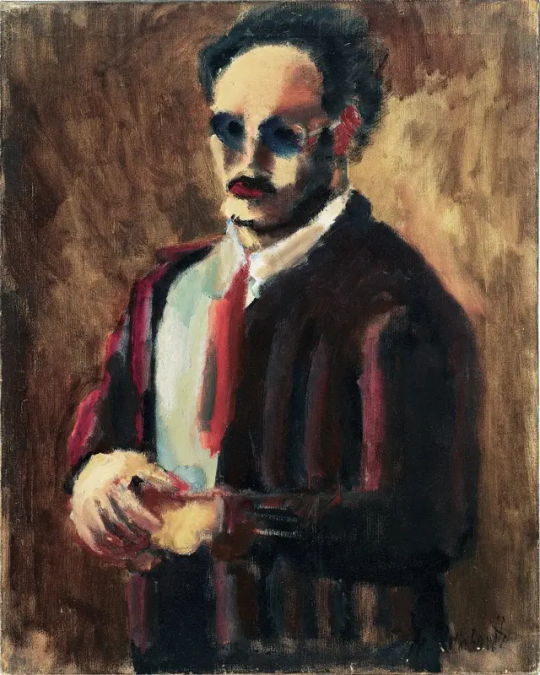
Markus Yakovlevich Rothkowitz , “Self-Portrait” (1936),
Oil on canvas, 32 1/4 x 26 inches.
Collection of Christopher Rothko,
© 1998 Kate Rothko Prizel & Christopher Rothko – Adagp, Paris, 2023.
Markus Rothkowitz was born in 1903, in what was then the Russian Empire and what is today Latvia, but 10 years later he emigrated along with his family to the US.
They were from the educated middle class, and Markus was a brilliant youth, leaving Yale University in 1923 and joining the Art Students’ League in New York.
He was naturalized as an American citizen in 1938 and soon changed his name.
For the rest of his life he was Mark Rothko.
#art#fierce#markus rothkowitz#self portrait#1936#mark rothko#russia#latvia#painting#history#abstract expressionism#christophe rothko#portrait#suicide
27 notes
·
View notes
Text
Mark Rothko: Revolucionando la Pintura Abstracta

Mark Rothko, un pintor abstracto de origen letón y nacionalidad estadounidense, tuvo un impacto profundo en la esencia y el diseño de la pintura abstracta. Sus contribuciones artísticas se caracterizan por una atención meticulosa a elementos formales como el color, la forma, el equilibrio, la profundidad, la composición y la escala. El objetivo de Rothko era crear pinturas que pudieran evocar emociones profundas en los espectadores, adentrándose en las profundidades de la experiencia humana, incluyendo la tragedia, el éxtasis y el destino. Él veía el arte como una forma poderosa de comunicación y un acto moral. La evolución estilística de Rothko encarnaba un renacimiento radical en la pintura, pasando de un repertorio visual figurativo a un estilo abstracto que involucraba activamente al observador con la obra de arte. Su influencia en la pintura estadounidense del Expresionismo Abstracto fue profunda.
Primeros años y carrera
Markus Yakovlevich Rothkowitz nació en Letonia en 1903. En el año 1913, decidió partir hacia los Estados Unidos junto a su familia en busca de nuevas oportunidades y horizontes.. Rothko estudió brevemente en la Universidad de Yale antes de abandonarla para encontrar su dirección y lugar en Nueva York en 1925. Su carrera pictórica de 45 años se puede dividir en cuatro períodos distintivos: los años realistas de 1924 a 1940, los años surrealistas de 1940 a 1946, los años de transición de 1946 a 1949 y los años clásicos de 1949 a 1970. Sin embargo, es mejor conocido por sus pinturas de campos de color producidas desde 1949 hasta 1970. Rothko se inspiró en artistas como Edward Hopper, Ad Reinhardt, Caspar David Friedrich, Salvador Dalí y Milton Avery. A su vez, su trabajo influyó en artistas como Helmut Federle, Charles Gibbons, Michel Majerus y Daan Lemaire. Mark Rothko falleció en 1970 en la ciudad de Nueva York.
Inspiración detrás de las pinturas de campos de color de Rothko
Las pinturas de campos de color de Mark Rothko fueron impulsadas por su deseo de crear una experiencia inmersiva para el espectador. Su objetivo era evocar emociones profundas y establecer una sensación de espiritualidad a través de su habilidoso uso del color y la forma. Rothko creía firmemente que el color tenía el poder de expresar toda la gama de emociones humanas. Su intención era envolver al espectador en un estado de ánimo o atmósfera específicos, conectándolos con algo más allá del yo individual. El concepto de lo sublime jugó un papel importante en su visión artística, permitiéndole trascender los límites del individuo y conectar con un profundo sentido de asombro y maravilla.
Las pinturas de campos de color de Rothko se caracterizan por áreas expansivas y planas de color que parecen extenderse más allá de los bordes del lienzo. Esta técnica crea una sensación de espacio infinito, invitando al espectador a sumergirse en la obra de arte. Los colores que eligió a menudo eran profundos e intensos, seleccionados cuidadosamente para provocar un efecto específico. Cada matiz desempeñaba un papel crucial en la transmisión de la resonancia emocional deseada. En general, las pinturas de campos de color de Rothko fueron un testimonio de su exploración de la intrincada relación entre el color, la forma y la emoción. Su objetivo era crear una experiencia visualmente poderosa que resonara profundamente con el espectador.
Uso único del color en comparación con otros expresionistas abstractos
El uso del color de Mark Rothko lo diferenció de otros expresionistas abstractos. Mientras que sus contemporáneos exploraban los elementos formales de la pintura, el enfoque de Rothko se centraba en evocar emociones y crear una sensación de espiritualidad a través del color y la forma. Sus campos de color diferían en las siguientes formas:
Amplios campos de color: Las pinturas de Rothko presentaban grandes áreas planas de color que se extendían más allá del lienzo, creando una percepción de espacio ilimitado.
Selección cuidadosa del color: Rothko era un experto en el uso del color y elegía cuidadosamente cada matiz para crear un efecto específico. Los colores profundos e intensos eran frecuentes en sus obras, intensificando el impacto emocional.
Emoción y espiritualidad: El objetivo de Rothko era sumergir a los espectadores en un estado de ánimo o atmósfera particular, conectándolos con algo más allá del yo individual.
Inspiración en lo sublime: Influenciado por lo sublime, Rothko buscaba trascender lo ordinario y conectar con un profundo sentido de asombro y maravilla.
El enfoque único de Rothko en el color enfatizaba la experiencia inmersiva para los espectadores, distinguiéndolo de sus contemporáneos que se centraban en otros aspectos del expresionismo abstracto.
Técnicas empleadas en las pinturas de campos de color de Rothko
Mark Rothko utilizó varias técnicas para crear sus pinturas de campos de color. Estas técnicas contribuyeron a la naturaleza inmersiva y emotiva de su obra. Las principales técnicas incluyen:
Selección cuidadosa del matiz: La experiencia de Rothko como colorista le permitió elegir los matices que provocarían respuestas emocionales específicas en los espectadores. Cada color fue considerado minuciosamente para lograr el efecto deseado.
Bordes suaves y difusos: Los bordes suaves y difusos que rodean los campos de color crean un estado de ánimo, mientras que las líneas más nítidas y rectas de las formas centrales evocan otro, resultando en una yuxtaposición de estados emocionales.
Capas de pintura: Rothko a menudo superponía finas capas de pintura para lograr un efecto luminoso y añadir profundidad a sus campos de color.
Amplias áreas planas de color: Las pinturas de campos de color de Rothko se caracterizan por áreas grandes y planas de color que parecen extenderse más allá de los bordes del lienzo, creando la ilusión de un espacio infinito.
Yuxtaposición de colores: Rothko lograba hábilmente yuxtaposiciones de colores al aplicarlos al lienzo de manera que crearan un efecto particular.
Si bien no hay información específica sobre los pinceles o herramientas que utilizó Rothko para crear sus campos de color, se puede inferir que empleó herramientas de pintura tradicionales como pinceles. Sus técnicas de superposición de pintura y selección cuidadosa del color contribuyeron a la experiencia inmersiva y la profundidad emocional presente en sus pinturas de campos de color.
En conclusión, las contribuciones de Mark Rothko a la pintura abstracta fueron revolucionarias. Su atención meticulosa a los elementos formales y su énfasis en el color y la forma crearon una experiencia visual poderosa para los espectadores. Las pinturas de campos de color de Rothko, inspiradas en su deseo de evocar emociones y establecer una espiritualidad, lo distinguieron de otros expresionistas abstractos. A través de la cuidadosa selección del color, técnicas de capas y el uso de áreas grandes y planas de color, Rothko creó obras de arte que continúan cautivando y conmoviendo a las audiencias hasta el día de hoy.
Originally published at https://artemartinprieto.com/on June 14, 2023.
0 notes
Text

Mark Rothko
Mark Rothko, an American Abstract Expressionist painter of Latvian Jewish descent, was part of a generation of artists who completely revolutionized abstract painting. Rothko consistently resisted attempts to interpret his paintings – he was primarily concerned with the viewer's experience.
Mark Rothko was born Markus Yakovlevich Rothkowitz in Latvia – then part of the Russian Empire – on September 25, 1903. In an environment where Jews were often blamed for many of the 'evils' that befell Russia, Rothko's early childhood was plagued by fear.
Rothko's father was an intellectual who provided his children with a secular and political upbringing. Despite their modest income, the family was highly educated: they read together often, and Rothko was fluent in Russian, Hebrew, and Yiddish.
In 1913, Rothko arrived at Ellis Island. His father's death left the family without economic support and led to Rothko severing his ties with religion. He started school in the States, learned his fourth language, and became an active member of the Jewish community.
In 1923, Rothko took classes from someone who had been part of the French avant-garde movement and who encouraged his students' eagerness about Modernism. As a result, Rothko began to view art as a tool of emotional and religious expression.
In the 1930s, Rothko became part of a group of young artists who spent time together painting and discussing art. He had his first solo show near the end of the decade and started to earn a growing reputation.
Pictured: Multiform (1948)

In 1940, concerned about anti-Semitism, Markus Rothkowitz abbreviated his name to Mark Rothko. In 1942, Rothko showed new work and (in response to a negative review) issued a manifesto which included the line "We are flat forms because they destroy illusion and reveal truth."
Pictured:
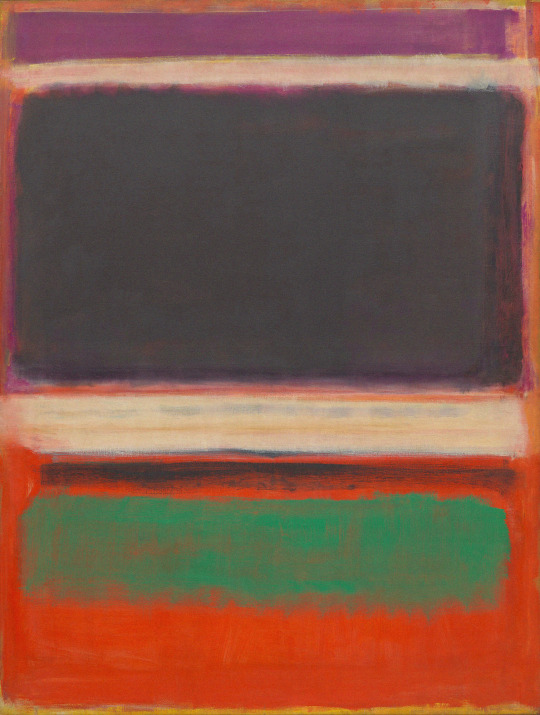
Rothko exhibited his new works in his signature style, introducing a compositional format that he would continue to develop throughout his career. His classic paintings of the 1950s are characterized by an increasingly simplified use of form, brilliant hues, and washes of color.

"I realize that historically the function of painting large pictures is painting something very grandiose and pompous. The reason I paint them… is precisely because I want to be very intimate and human."
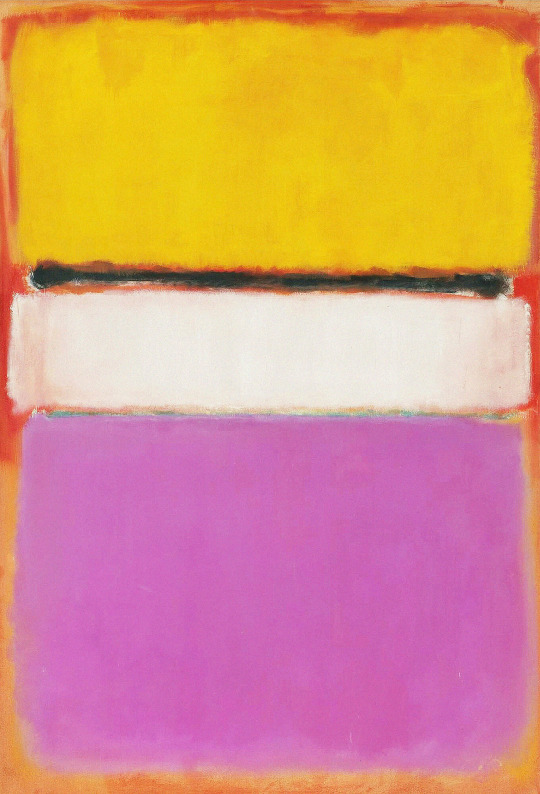
Rothko went so far as to recommend that viewers position themselves as close as 18 inches from the canvas so they might experience a sense of intimacy, awe, and the unknown. Rothko exhibited in several solo shows, met art dealers, and his financial situation began to improve.
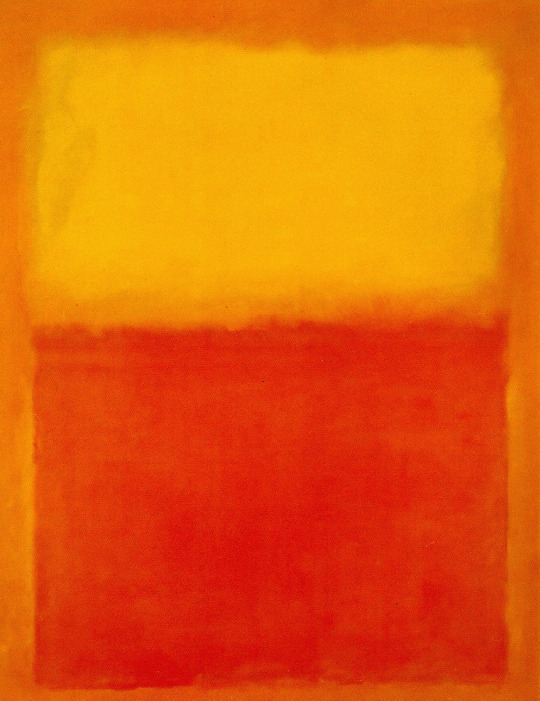
Despite his fame, Rothko felt a personal seclusion and sense of being misunderstood as an artist. His growing success led to fighting within his friend group, and he feared that people purchased his paintings out of fashion and the true purpose of his work was not being grasped.

In early 1968, Rothko was diagnosed with a mild aortic aneurysm; he ignored doctor's orders and drank and smoke heavily. On February 25, 1970, Rothko's assistant found the artist lying dead on the kitchen floor, having overdosed. He was only 66.
#Markus Yakovlevich Rothkowitz#Markus Rothkowitz#Markus#Rothkowitz#Mark Rothko#Mark#Rothko#American Abstract Expressionist#American#Abstract Expressionist#Abstract Expressionism#Abstract Expressionist painter#Abstract Expressionist artist#painter#artist
10 notes
·
View notes
Video
undefined
tumblr
Happy Birthday Mark Rothko
born Markus Yakovlevich Rothkowitz, September 25, 1903, Daugavpils, Latvia
Thank you to everyone here who shares their thoughts, impressions and personal pictures from museum visits. Your participation helps keep the work alive.
Should be a good year here too with things coming that no one (including me) has ever seen in digital form.
Peace and love to all of you.
#mark rothko#rothko#daily rothko. dailyrothko#abstract expressionism#art#modern art#abstraction#important art#color field painting#gallery#oil painting#new york artist
190 notes
·
View notes
Photo

Mark Rothko, born Markus Yakovlevich Rothkowitz (Russian: Ма́ркус Я́ковлевич Ротко́вич, Latvian: Markuss Rotkovičs; September 25, 1903 – February 25, 1970)
12 notes
·
View notes
Text
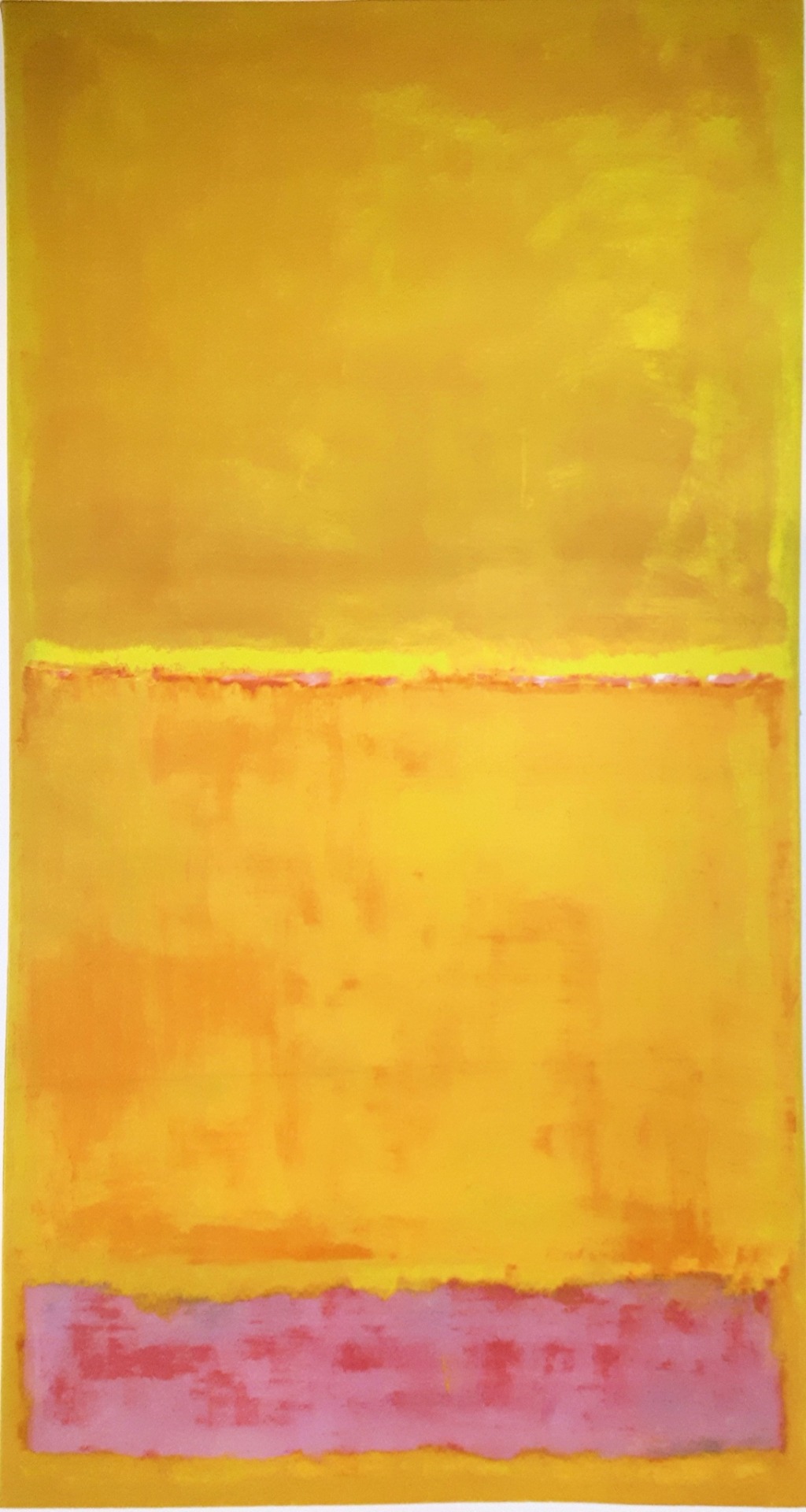
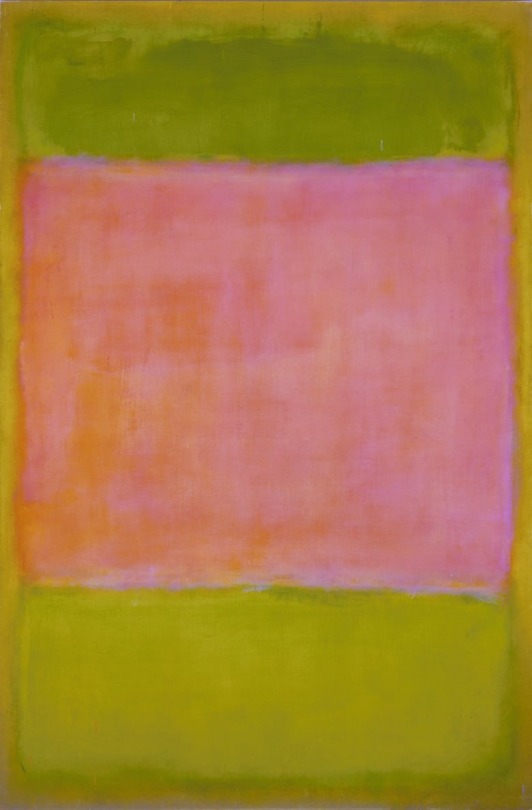


Markus Yakovlevich Rothkowitz
Mark Rothko 1903-1970
1 note
·
View note
Photo

❣️Ren Sourcing Loves❣️ MARK ROTHKO (Kaydırmalı post👉🏻) -Please see comment section for English- 🌟TÜRKÇE: Mark Rothko (Markus Yakovlevich Rothkowitz) (1903 - 1970), Letonya kökenli Amerikalı, soyut tarzda bir ressamdı. En çok 1949'dan 1970'e kadar ürettiği, düzensiz ve dikdörtgen renk bölgelerini betimleyen resimleriyle tanınmaktadır. Başlangıçta ailesiyle Rusya'dan Portland, Oregon'a göç eden Rothko, daha sonra gençlik döneminin sanatsal üretiminin esas olarak kentsel manzarayla ilgilenmesi sebebiyle New York City'ye taşınmıştır. İkinci Dünya Savaşı'na yanıt olarak, Rothko'nun sanatı, trajediyi ifade etmek için mitolojik temalar ve sürrealizm ile deneyler yaptığı 1940'larda bir geçiş aşamasına girmiştir. Bu sürecin sonuna doğru, Rothko hayatının geri kalanında kullanacağı deyim olan dikdörtgen renk formlarına daha da soyutladığı saf renk bölgeleri olan tuvalleri boyamıştır. Daha sonraki kariyerinde Rothko üç farklı duvar resmi projesi için birkaç tuvale imza atmıştır. Seagram duvar resimleri, Seagram Binası'ndaki Four Seasons Restaurant'ı süslemiştir, ancak Rothko sonunda resimlerinin zengin yemek yiyenler için dekoratif objeler olacağı fikrinden tiksinmiş ve yüksek ödemeyi iade ederek resimlerini Tate Modern de dahil olmak üzere müzelere bağışlamıştır. Rothko hayatının çoğunu mütevazı bir şekilde yaşamasına rağmen, 1970'teki intiharını izleyen onlarca yılda resimlerinin yeniden satış değeri muazzam bir şekilde artmıştır. Rothko'nun resimleri aynı zamanda moda tasarımcılarını da etkilemiştir ve çeşitli stillerdeki renk bloğu uygulamaları açıkça onun benzersiz tarzını hatırlatmaktadır. İşte bazı örnekler; Schiaparelli Haute Couture Sonbahar 2017 ve Naeem Khan İlkbahar 2018 Hazır Giyim koleksiyonlarından elbiseler ve Raf Simons Sonbahar 2008 Erkek giyim koleksiyonundan bir süveter. 📝 wikipedia.com 📸 vogue.com, wikiart.org #rensourcing #rensourcingloves #markrothko #rothko #rafsimons #schiaparelli #naeemkhan (Ren Sourcing - Sibel Ege) https://www.instagram.com/p/CPJUKwULkeU/?utm_medium=tumblr
0 notes
Photo

Homage to Markus Yakovlevich Rothkowitz a.k.a. Mark Rothko. (DJI FC220 26.3mm ƒ/2.2 4.7mm 1/25" iso 160) #markrothko #landscape #natgeo #dronephotography #flying #lovezeeland #zeeland #breskens #minimalism #nature #beach #photooftheday #adventure (bij Breskens)
#flying#adventure#landscape#minimalism#nature#markrothko#beach#photooftheday#natgeo#breskens#zeeland#dronephotography#lovezeeland
1 note
·
View note
Text
#MarkRothko #colourfield #abstractimpressionism
Mark Rothko, born Markus Yakovlevich Rothkowitz (Russian: Ма́ркус Я́ковлевич Ротко́вич, Latvian: Markuss Rotkovičs), (September 25, 1903 – February 25, 1970), was an American abstract painter of Latvian Jewish descent. He is best known for his color field paintings that depicted irregular and painterly rectangular regions of color, which he produced from 1949 to 1970.
Rothko did not personally subscribe to any one school; however, he is associated with the American Abstract Expressionist movement of modern art. Originally emigrating to Portland, Oregon from Russia with his family, Rothko later moved to New York City where his youthful period of artistic production dealt primarily with urban scenery. In response to World War II, Rothko's art entered a transitional phase during the 1940s, where he experimented with mythological themes and Surrealism to express tragedy. Toward the end of the decade Rothko painted canvases with regions of pure color which he further abstracted into rectangular color forms, the idiom he would use for the rest of his life.
0 notes
Text
I love how the play Red is basically just Ken and Rothko ranting at and trauma dumping on each other.
#this isn't an insult by the way#it’s a great play#definitely a Sumiro thing#it helped me develop in all sorts of ways#red#the play red#mark rothko#markus yakovlevich rothkowitz#john logan#noelle's rambles
0 notes
Text
Research
Mark Rothko

• Mark Rothko (Markus Yakovlevich Rothkowitz) was a American abstract painter of Latvian Jewish Decent.
• Known for his colour field paintings.
• In which he depicted irregular and rectangular regions of colours.
• Rothko's art transitioned during the 1940's, experimenting with mythological themes and Surrealist to express tragedy.
• At the end of the decade Rothko painted canvas of abstract regions of pure colour with rectangular colour forms.
Pictured below are pieces of Rothko's work he has done that I found inspiring and interesting as it reminded me of the colour scheme of that of a sunrise and vibrancy that stands out.


0 notes
Photo

“A painting is not a picture of an experience, but is the experience.” - Mark Rothko ********************************** Mark Rothko, born Markus Yakovlevich Rothkowitz (September 25, 1903 – February 25, 1970), was an American painter of Russian Jewish descent. Although Rothko himself refused to adhere to any art movement, he is generally identified as an abstract expressionist. ********************************** #Quote #MarkRothko #Art #Painting #EnjoyCreating #PaintingIsTheExperience https://www.instagram.com/p/CJb7-IdlJSH/?igshid=l5gxawa53t3m
0 notes
Photo

Day 4 of my March of Artists features: Mark Rothko Mark Rothko, born Markus Yakovlevich Rothkowitz, was an American painter of Lithuanian Jewish descent. Although Rothko himself refused to adhere to any art movement, he is generally identified as an abstract expressionist. (at Pasadena, California) https://www.instagram.com/p/B9UQHIqJ20h/?igshid=10x0cu4vzlecn
0 notes
Text
World Refugee Day

World Refugee Day
Observed June 20 each year, dedicated to raising awareness of the situation of refugees.
World Refugee Day, international observance observed June 20 each year, is dedicated to raising awareness of the situation of refugees throughout the world
The Metropolitan Museum Shrouded a Mark Chagall Painting to Draw Attention to World Refugee Day
The museum shrouded the painting to ask the question: “What would the Met’s walls look like if there were no refugees?” Works by other famous artists including Max Ernst, Piet Mondrian, and Mark Rothko are labeled as works “made by a refugee.”

Since Monday, visitors to the Metropolitan Museum of Art in New York City have been encountering an unusual sight at the museum’s Modern and Contemporary Art galleries, finding Marc Chagall’s “The Lovers” (1913-14) hidden behind a large cloth. A sign posted next to the painting asks: “What would the Met’s walls look like if there were no refugees?” Chagall’s painting will remain shrouded until this evening, June 20, for the World Refugee Day, to symbolically illustrate what the answer to this question might have been.
This gesture is part of a global campaign organized by the humanitarian aid organization the International Rescue Committee (IRC) to highlight the contributions of refugees to their hosting countries. As part of the campaign, the Metropolitan Museum of Art and the Met Breuer are spotlighting nine artworks created by refugee artists including Max Beckmann, Ibrahim El-Salahi, Max Ernst, Piet Mondrian, Sopheap Pich, and Mark Rothko. A yellow sign posted next to each one of the works reads, “This work was made by a refugee.” The yellow labels (the color is taken from the IRC’s logo) encourage visitors to share the works on social media using the hashtag #WorldRefugeeDay. Tate Galleries and the Victoria and Albert Museum in London are collaborating with the IRC on similar initiatives.
“The Lovers” (1914-15) depicts Chagall with his wife and muse Bella Rosenberg during their life together in Paris. The Belarus-born couple fled Nazi-occupied France in 1941 and resettled in New York City. Chagall’s granddaughter Bella Meyer, owner of the flower studio fleursBELLA in Greenwich Village in Manhattan, was the Met’s guest of honor at the shrouding ceremony. “I wouldn’t have been here if my grandparents were not accepted into the US,” she told Hyperallergic while standing next to her grandfather’s shrouded painting. “I’m very moved by [the Met’s] gesture towards refugees,” she continued. “Our culture is made out of all these extraordinary creators.”
Since June 2000, the UN World Refugee Day has been observed every year to raise awareness of the plight of refugees around the world. “We’re trying to puncture the animus that is swelling towards the refugee populations at the moment,” said David Miliband, President and CEO of the IRC, at a press conference at the Met on Monday.

“We’re living at a time of a double emergency,” Miliband contended. “On the one hand, we have more refugees and displaced people than ever before,” he said, adding that as of 2019, 68.5 million people are either refugees or internally displaced. “The second part of the emergency is that there are more and more places that are turning their back on these people,” he added. “It’s bad enough that millions of people from places like Syria, Myanmar, or South Sudan are fleeing for their lives, but the fact that they should then be seen as a burden or a problem rather than as people in need of help doubles the load. It’s a very important time for people to stand up and recognize global responsibility,” he said.
“There’s an increasingly popular conviction that museums cannot any longer be neutral sites, but they hold responsibility to be vehicles for social justice and civic exchange,” said Sheena Wagstaff, the Met’s chairman of the department of Modern and Contemporary art. “Art can inspire a different kind of understanding, one grounded in the sense of common humanity. While the personal lives of these artists and their devastating experiences as refugees are beyond our comprehension, they are not beyond our empathy or imaginings,” she added.

Marc Chagall, “The Lovers” (1914-15) (courtesy the Metropolitan Museum of Art)
Chagall was one of 1,500 refugees who were transported out of France under the Vichy regime in 1941 as part of a rescue effort by an organization that later became the IRC. Mark Rothko, born Markus Yakovlevich Rothkowitz, arrived at Ellis Island with his mother at age ten in 1913 to escape persecution in Imperial Russia. Leipzig-born Max Beckmann, whose work was labeled as “degenerate art” by the Nazi regime and banned from museums, arrived in the United States in 1948 after a period of exile in the Netherlands. Max Ernst, who was persecuted by the Nazi Gestapo police and cast out to an internment camp in France with other surrealist artists as “undesirable foreigners,” arrived in the US in 1941 with the help of his future wife Peggy Guggenheim. Dutch painter Piet Mondrian, who lived in Paris in the 1930s, escaped France after the Nazi occupation and immigrated to the US in 1940 after a period in London. Cambodian artist Sopheap Pich fled from the Khmer Rouge’s regime’s massacres and fled to the US with his family as a teenager. Ibrahim El-Salahi, a Sudanese artist and former politician, was imprisoned by the Nimeiri regime in Sudan in 1970 on charges of participating in an anti-government coup. He is now based in Oxford in the United Kingdom.
The IRC was founded in 1933 at the request of Albert Einstein, himself a refugee, who lived in New York at the time. The organization helps resettle war refugees in new countries. “It’s not an accident that [Einstein] was in New York and it’s not an accident that he stayed in New York,” Miliband said, “This is a city that has been opened to the world during the best of its times.”
On Monday evening, President Trump announced mass arrests and deportations of immigrants in the US starting next week. “Next week ICE will begin the process of removing the millions of illegal aliens who have illicitly found their way into the United States,” Trump tweeted. “They will be removed as fast as they come in.”

Max Beckman, “The Beginnings” (1946-49) (photo by the author for Hyperallergic)
Miliband, who was a former member of the British parliament and the UK’s Secretary of State for Foreign and Commonwealth Affairs between 2007-2010, sent a measured, diplomatic nod toward the Trump administration’s immigration policies saying, “The Federal Government has not always allowed the United States to be open to the world, but the best of New York has come from its remarkable openness: what it gives, as well as what it takes from the wider world.”
0 notes
